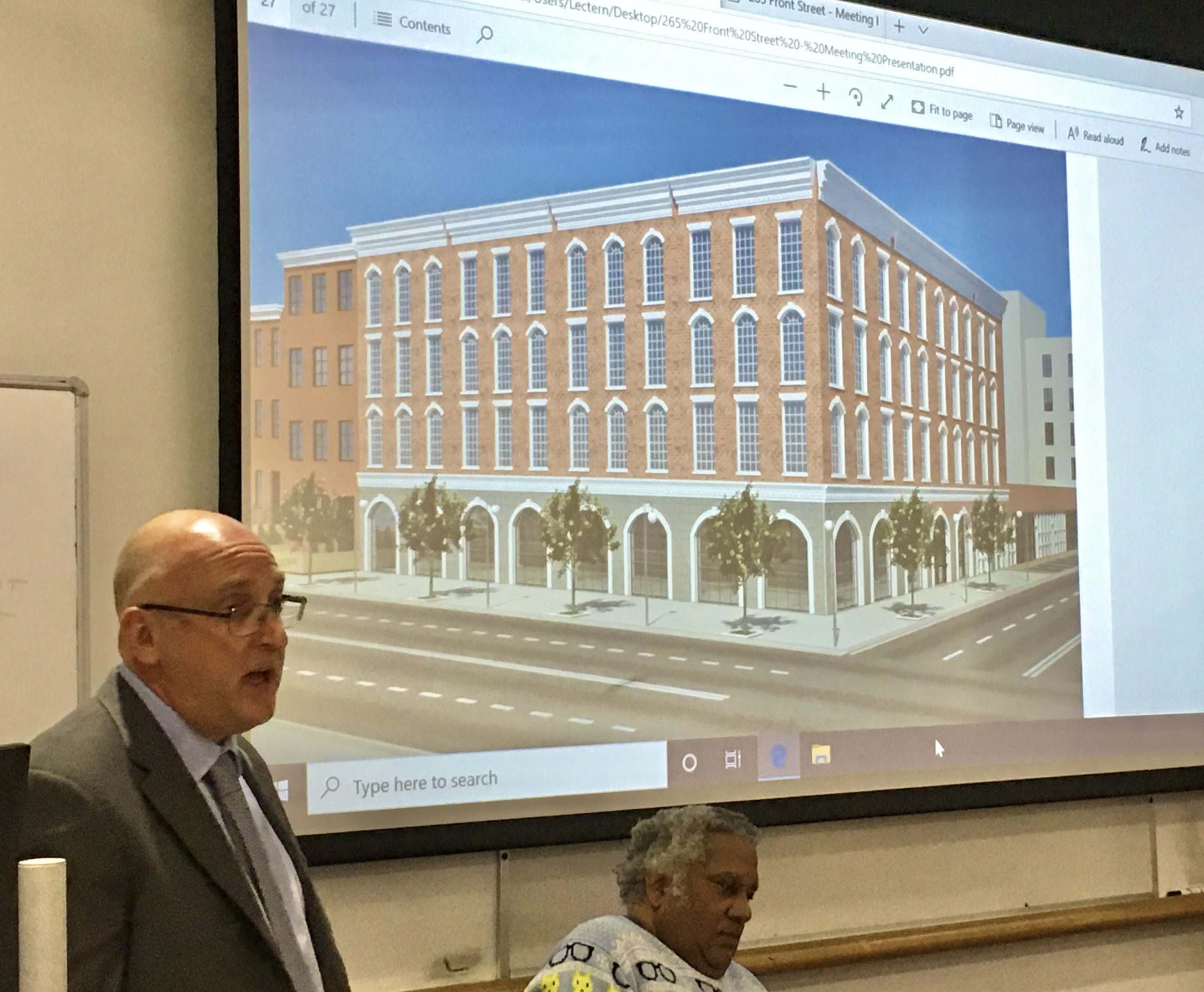R-e-s-p-e-c-t the z-o-n-i-n-g, Vinegar Hill residents tell property owners.
‘We heard everybody’s concerns,' their lawyer assured the Brooklyn Eagle.

Attorney Eric Palatnik shows a design for development at 265 Front St. to Community Board 2’s Land Use Committee, which rejected the plan. Photo: Lore Croghan/Brooklyn Eagle
Michael and Tom Spinard wanted to build a nine-unit apartment building with shops on their corrugated fence-enclosed Vinegar Hill property, which has been a parking lot since the 1950s.
Neighborhood residents who oppose their development plan said they got the zoning all wrong.
Community Board 2’s Land Use Committee voted down the Spinard brothers’ plan for 265 Front St. on Wednesday night and told them to come back with a design for a smaller development.
